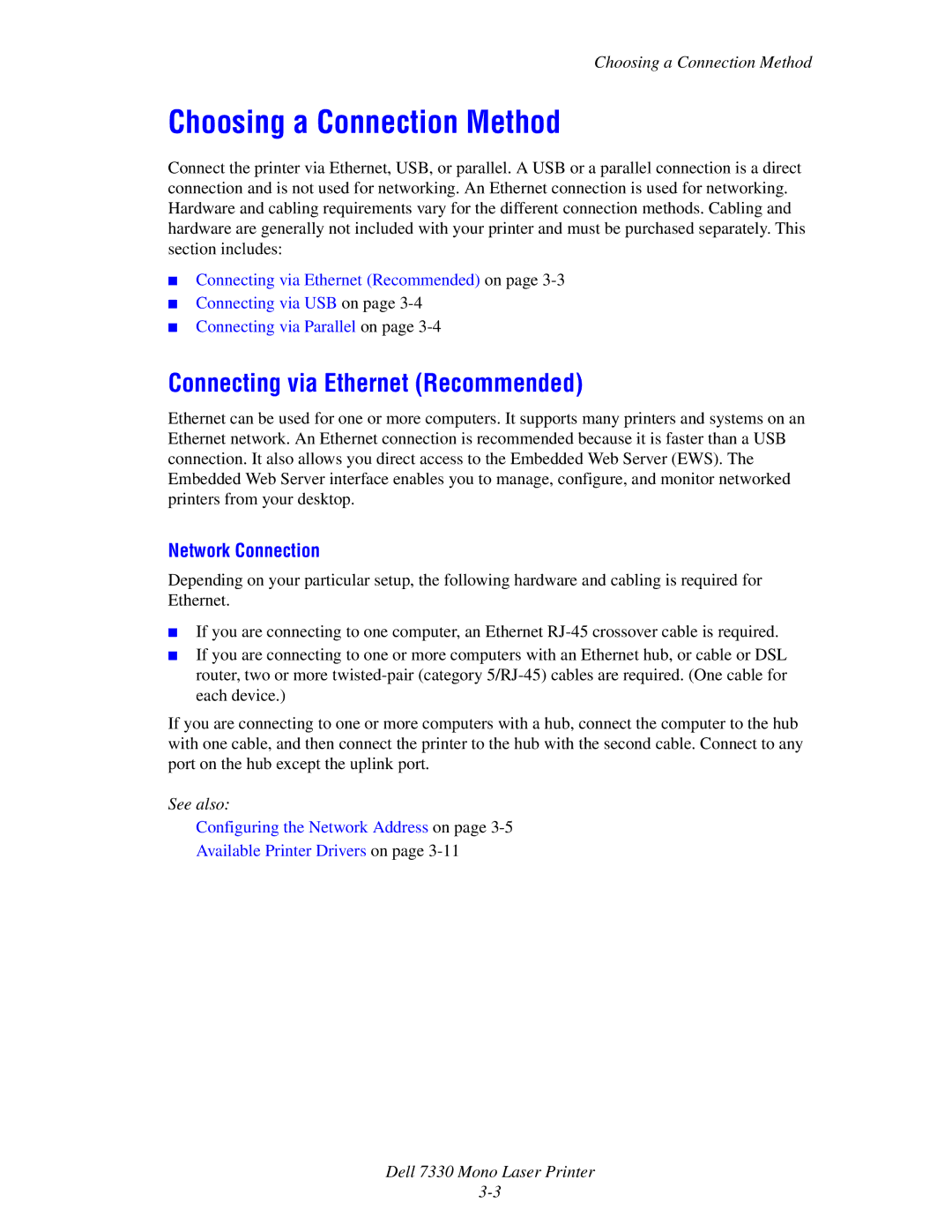Choosing a Connection Method
Choosing a Connection Method
Connect the printer via Ethernet, USB, or parallel. A USB or a parallel connection is a direct connection and is not used for networking. An Ethernet connection is used for networking. Hardware and cabling requirements vary for the different connection methods. Cabling and hardware are generally not included with your printer and must be purchased separately. This section includes:
■Connecting via Ethernet (Recommended) on page
■Connecting via USB on page
■Connecting via Parallel on page
Connecting via Ethernet (Recommended)
Ethernet can be used for one or more computers. It supports many printers and systems on an Ethernet network. An Ethernet connection is recommended because it is faster than a USB connection. It also allows you direct access to the Embedded Web Server (EWS). The Embedded Web Server interface enables you to manage, configure, and monitor networked printers from your desktop.
Network Connection
Depending on your particular setup, the following hardware and cabling is required for Ethernet.
■If you are connecting to one computer, an Ethernet
■If you are connecting to one or more computers with an Ethernet hub, or cable or DSL router, two or more
If you are connecting to one or more computers with a hub, connect the computer to the hub with one cable, and then connect the printer to the hub with the second cable. Connect to any port on the hub except the uplink port.
See also:
Configuring the Network Address on page
Available Printer Drivers on page
